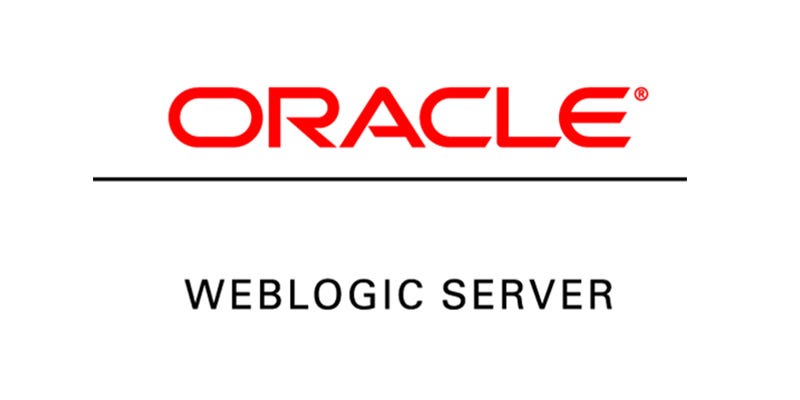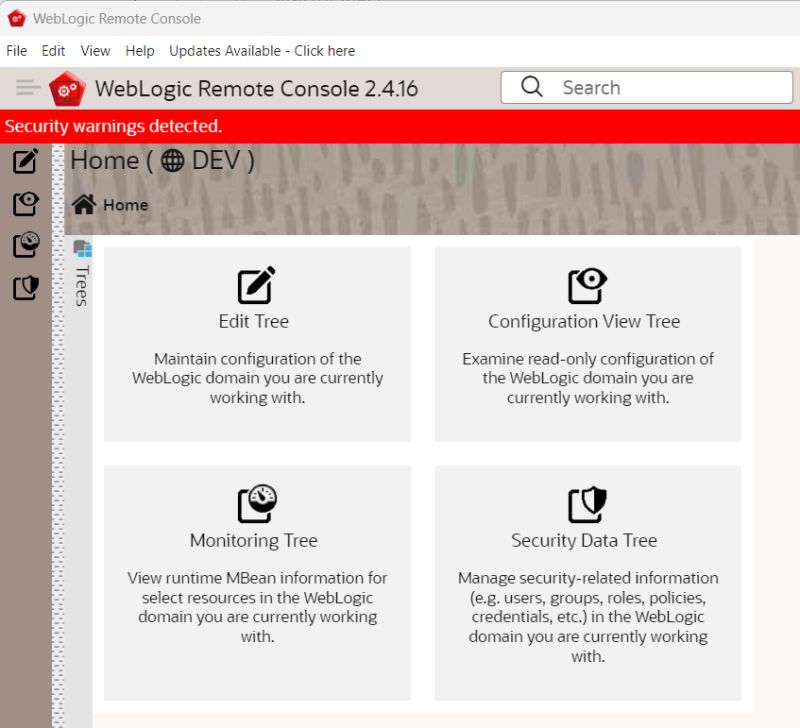After years working with WebLogic and other application servers (JBoss, WildFly, Tomcat, etc.), I’ve seen most of the challenges enterprises face: domains that refuse to start, clusters that behave unpredictably, and performance issues caused by poor configurations. What experience has taught me is clear: when Best Practices are applied, environments are far more stable and easier to manage.

With the release of WebLogic 14.1.2, Oracle has introduced significant updates that directly affect stability, security, and modernization. Below is an overview of what’s new and what it means for organizations planning to upgrade.
A Quick Stroll Through WebLogic History
| Version | Release Date | Comment |
|---|---|---|
| 10.3.x | 2009–2012 | The “legacy” version — still found in production in 2025. |
| 12.1.x | 2011 | Added Java EE 6 support. |
| 12.2.1.x | 2015 | Introduced multitenancy, scaling, and many incremental patches. |
| 14.1.1 | 2020 | First in the 14 series: Java EE 8, TLS defaults. |
| 14.1.2 | 2024 | Current release: JDK 17/21 support, stronger security, new tooling. |
What’s New in WebLogic 14
1. Modern Java Support
WebLogic 14.1.2 now officially supports JDK 17 and JDK 21. This provides access to performance improvements (e.g., G1GC, ZGC) and modern Java language features such as records, sealed classes, and switch expressions.
Impact for organizations:
- Applications gain performance and security improvements.
- Stricter Java module system may expose hidden dependencies.
- Legacy libraries or reflection-based solutions may fail.
- Outdated JDBC drivers and frameworks may require upgrading.
2. Strengthened Security Defaults
Security has been significantly improved in WebLogic 14:
- OpenID Connect support for integration with modern identity providers.
- TLS 1.0 and 1.1 removed; only strong cryptographic protocols are supported.
- Domain-specific demo certificates using PKCS12 keystores by default.
Impact for organizations:
- Easier integration with enterprise authentication and identity management.
- Legacy systems that depend on outdated SSL/TLS protocols will need upgrades.
3. Administration Console Evolution
The traditional WebLogic Admin Console has been retired and replaced with the Remote Console, a lightweight web application that communicates via REST APIs.
Advantages:
- Manage WebLogic securely from anywhere.
- Console can be upgraded independently from the server.
Considerations:
- Administrators must adapt to a new interface.
- Existing procedures, documentation, and training materials will require updates.

4. Migration and Refactoring Tools
Oracle introduced two new tools to assist with upgrades:
- Migration Analysis Tool (MAT): Scans applications and reports compatibility issues.
- OpenRewrite Recipes: Automates some application refactoring tasks.
Considerations:
- These tools provide useful guidance, but results often require expert interpretation.
- Automated refactoring may only cover part of the necessary work.
5. Clustering and Database Enhancements
Enhancements in high availability and database integration include:
- Health-based routing: Routes requests to the healthiest available node.
- Database client modules: Simplify integration in Kubernetes and containerized environments.
- Improved failover and multi-data center support: Reduce complexity in HA deployments.
Impact for organizations:
- More reliable clustering.
- Simplified operations in cloud and hybrid environments.
- Better resilience in multi-DC architectures.
Should You Upgrade?
Short answer: yes. Long answer: yes, but carefully.
Sticking with 12c in 2025 is like still using Internet Explorer – technically possible, but also technically embarrassing. At some point, Oracle’s support matrix will drop you, and then you’re one zero-day away from chaos.
In another world, continuing to run WebLogic 12c in 2025 is increasingly difficult to justify:
- Security vulnerabilities accumulate as older versions leave support.
- Integration with modern Java, Kubernetes, and identity providers becomes more challenging.
- Oracle’s support matrix is moving forward, and legacy environments are becoming costly liabilities.
Final Thoughts
WebLogic 14 is not just an incremental update. It modernizes the platform with stronger security, cloud-native capabilities, and support for the latest Java standards. At the same time, it introduces changes that require careful planning to avoid disruption.
This is where experienced guidance is valuable. With years of WebLogic consulting experience, I support organizations by:
- Auditing WebLogic installation for compatibility issues before migration.
- Planning and executing upgrades with minimal downtime.
- Configuring new security features and administration tools correctly.
- Coaching development and operations teams to adapt to the changes.
👉 If your organization is considering upgrading to WebLogic 14, let’s discuss how to make the transition smooth, secure, and future-proof.
Happy to share,
David
Have a look to all my blogs
![Thumbnail [60x60]](https://www.dbi-services.com/blog/wp-content/uploads/2022/09/DDI_web-min-scaled.jpg)
![Thumbnail [90x90]](https://www.dbi-services.com/blog/wp-content/uploads/2025/05/JDE_Web-1-scaled.jpg)